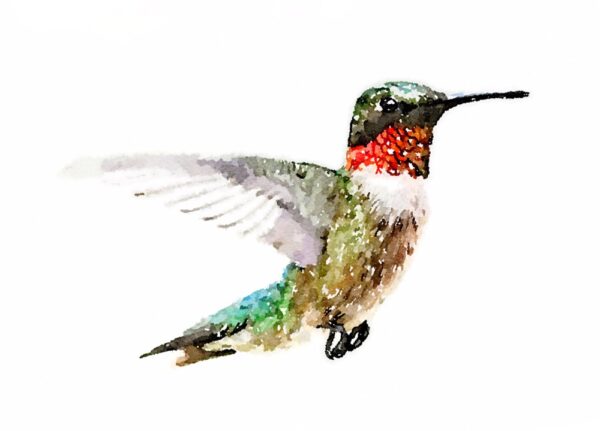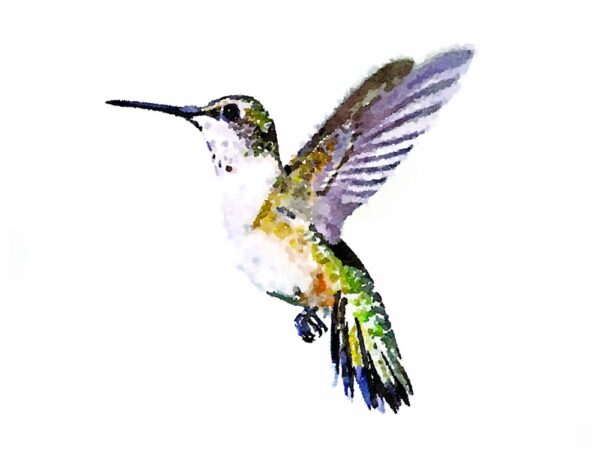
It’s tempting to perceive hummingbirds as restless and playful. Here one moment; gone the next. Zipping hither and yon, seemingly indecisive, pausing then vanishing in the blink of an eye.
Hummingbird Haiku
When hum, hover, thrum
and blur-sip, blur-sip flitting,
you weave wild wonder.
Perhaps hummingbirds offer us a fleeting reminder to live wild and free? To welcome the wisdom of wonder? To wander wider? Perhaps a joyful nudge to pursue a nonlinear path, to be unimpeded by obstacles, to bound between ambrosial blossoms?
Although the exhilarating buzz of hummingbirds’ comings and goings emphasizes their speed, agility, and minuteness, it’s their capacity to hover with mysterious precision that fascinates me. If their apparently haphazard zigzagging suggests levity (and an almost whimsical wanderlust), their sudden stops and undeviating levitation demonstrate exactitude and accuracy. While their course hints at vacillation, their pinpoint accuracy at blossom after blossom is unvacillating.

Needless to say these miniature beauties with wings that flutter faster than our eye can process intrigue me. Hummingbirds have made many a cameo in my Rosslyn Redux updates across the years starting in the earliest forays.
Recalibrating our urban rhythm to the comings and goings of the Essex-Charlotte ferry. A pair of effervescent hummingbirds flitting from blossom to blossom in the flowerbeds that we would coax back to life.
(Source: We Could Live at Rosslyn)
A good omen at the time despite my clunky narrative flow!
That excerpt, now many years old, feels as familiar as yesterday. And the leap from ferryboat arrivals and departures to hummingbirds (as much a non sequitur today as it must’ve been then) transports me to that time of contemplation and wonder. What would it be like to live at Rosslyn? These rhythms and textures of life at Rosslyn blossomed from curiosity to reality.
(Source: Ferry Rhythm)
As a gardener and orchardist, hummingbirds (like honeybees, butterflies, and bats) are my companions and colleagues.
Whether hummingbirds or butterflies or honey bees or bats or scores of other pollinators accidentally doing the work of fertilizing flowers from generation to generation, the appetite for nectar powers progeny. A sweet song of perpetuity. A dulcet dance engendering poppies aplenty.
(Source: Papaver Bee-ing)
This is especially apparent in the springtime and early summer. 
We are… reliant on… honeybees, butterflies, hummingbirds, etc. to ensure the fertilization of our apples, pears, stone fruit, mulberries, and persimmon. (Source: Beekeeper Rendezvous 1924)
Reliant indeed. For fertilization. For beauty. For reminders. For metaphor…
What do you think?